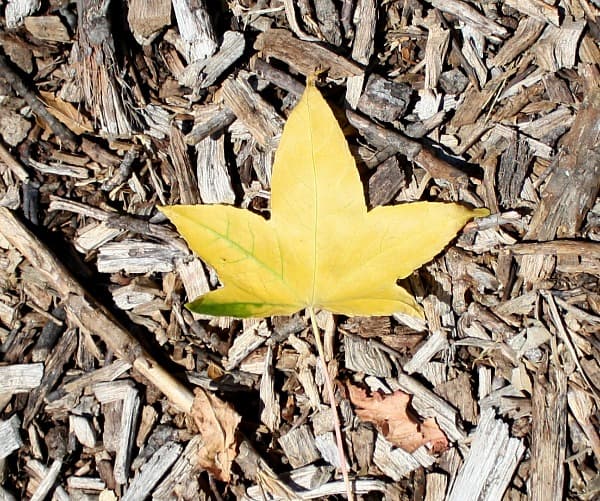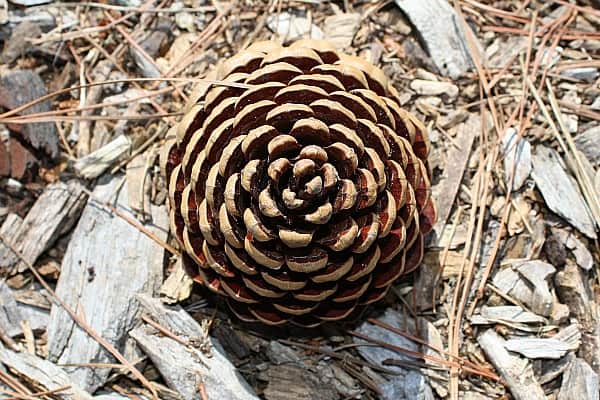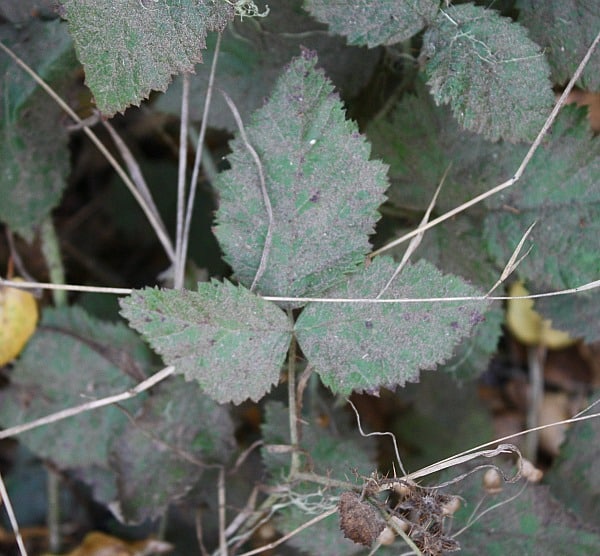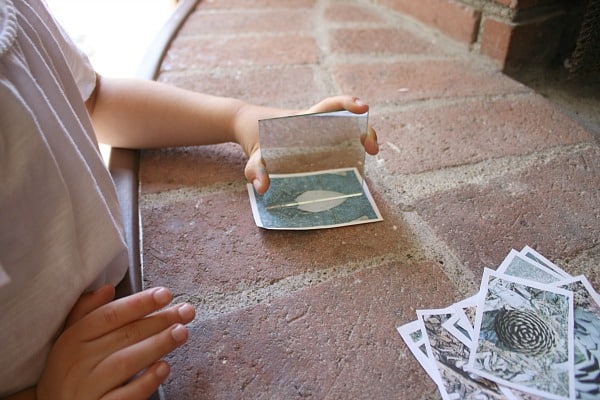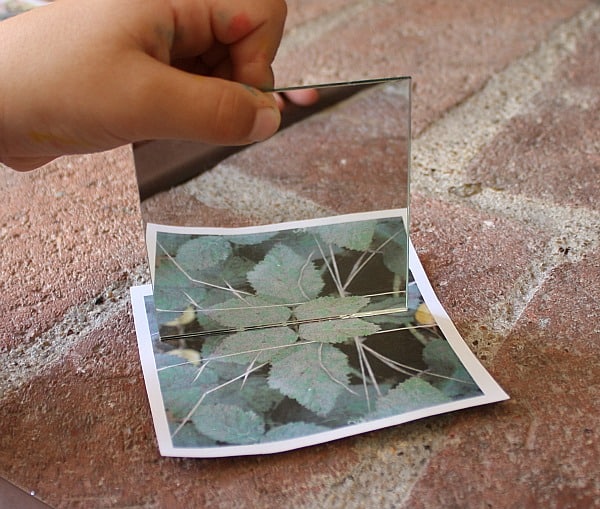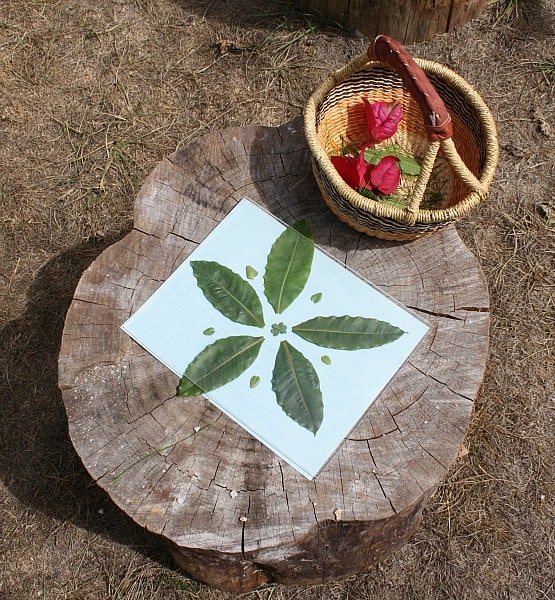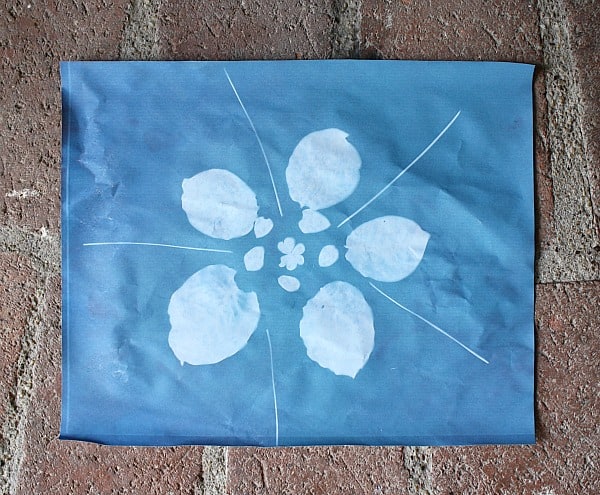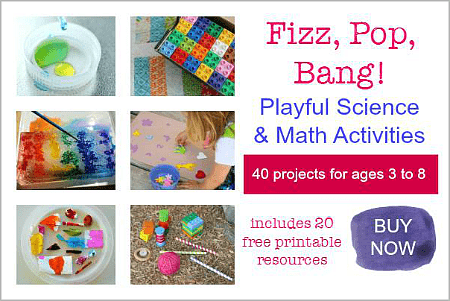We turned a recent walk in the forest into a lesson on symmetry- such a fun, hands-on way for kids to learn math! We searched for symmetry outside and even created our own symmetry art using nature we had found on our walk!
Follow our Math for Kids Pinterest board!
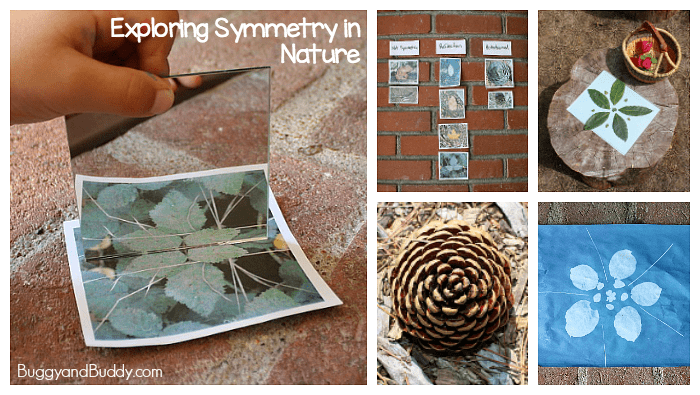
Learning opportunities are everywhere you look. Even as you’re taking a walk outside, you are surrounded by boundless possibilities! As our family took a short stroll in a nearby forest, we spotted all kinds of interesting shapes and patterns in nature. Since Lucy and I had recently been reading some books on symmetry, we thought it’d be fun to examine the natural objects and see if we could find any that were symmetric. (This post contains affiliate links.)
Finding Symmetry in Nature with Kids
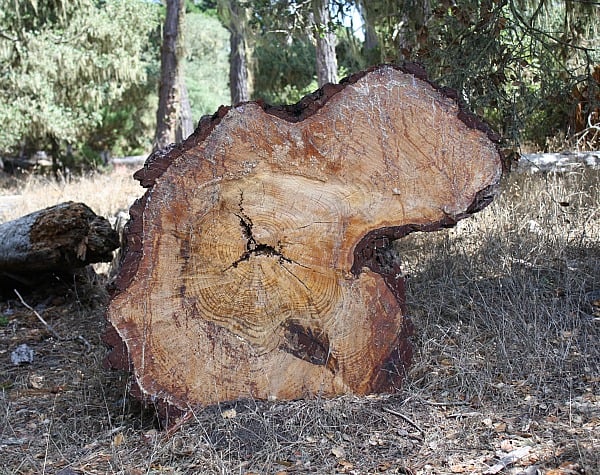
Lucy was pretty sure this stump was not symmetrical. We decided to take a photo of it to test it out with a mirror at home.
We took pictures of various items we found on the walk: leaves, sticks, tree stumps, and pinecones. We made guesses on if we thought they were symmetrical and talked about why. When we got home we printed out our photos onto paper to study them more closely.
From our previous readings, we learned about the various kinds of symmetry. We decided to focus on rotational symmetry (where an image can be rotated on a central point and still looks the same) and on reflection symmetry (where one half is a reflection of the other half.)
After printing out our photos, we got out a little mirror (like this one) and tested out each image. This leaf was a good example of reflection symmetry.
It took Lucy a few tries to find the line of symmetry for this group of leaves. She loved seeing all the different ways she could make image look in the mirror!
After testing the pictures with the mirror, we sorted them into three different categories: images that were not symmetrical, images that were examples of rotational symmetry, and images that were examples of reflection symmetry.
When we were done sorting the pictures, we stuck them up on our wall with poster putty. (Poster putty is my favorite material for hanging papers on the wall. Easy to remove and no damage to the walls!) Now we can add to it with examples we find on future walks!
We also thought it would be fun to make our own examples of symmetry with nature. Have you heard of sun sensitive paper? You can place objects on the paper, and then expose the paper to light to create designs and artwork. We love creating with this!
We walked around the yard and collected some natural materials. Then we used the collected items to create a rotationally symmetric design. It was such a great way to use what Lucy had learned about symmetry to create art!
Children’s Books About Symmetry
Seeing Symmetry by Loreen Leedy
What Is Symmetry in Nature? by Bobbie Kalman
Is It Symmetrical? by Nancy Allen

Find more STEM activities in our ebook! Learn more about it here, or buy it now here!

